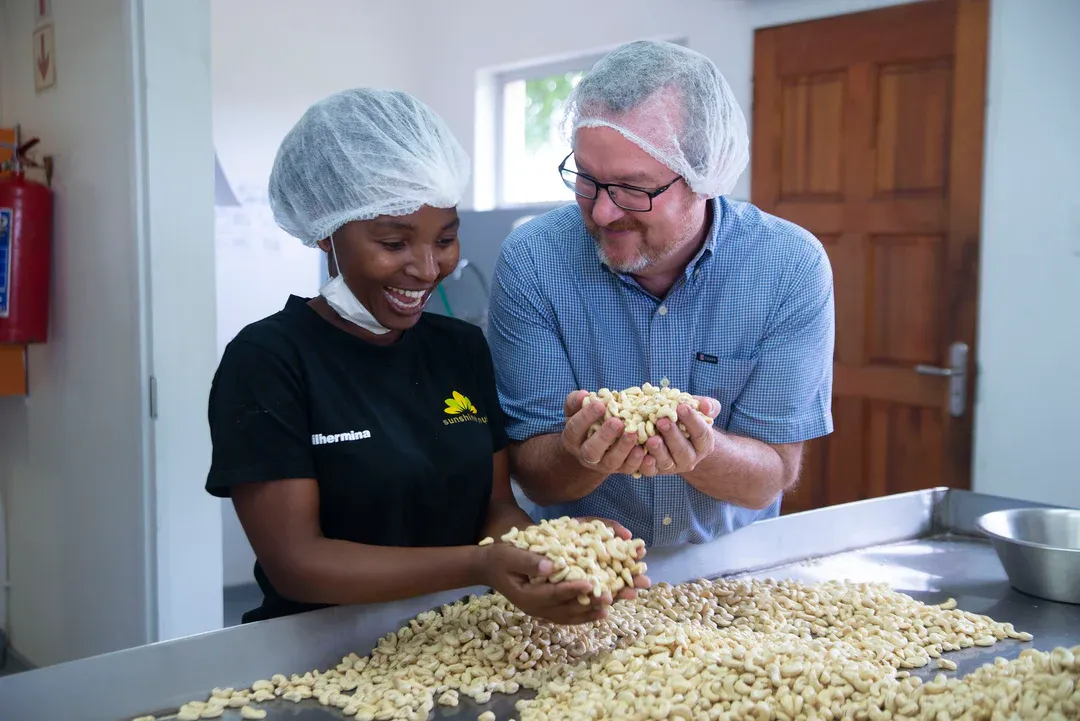
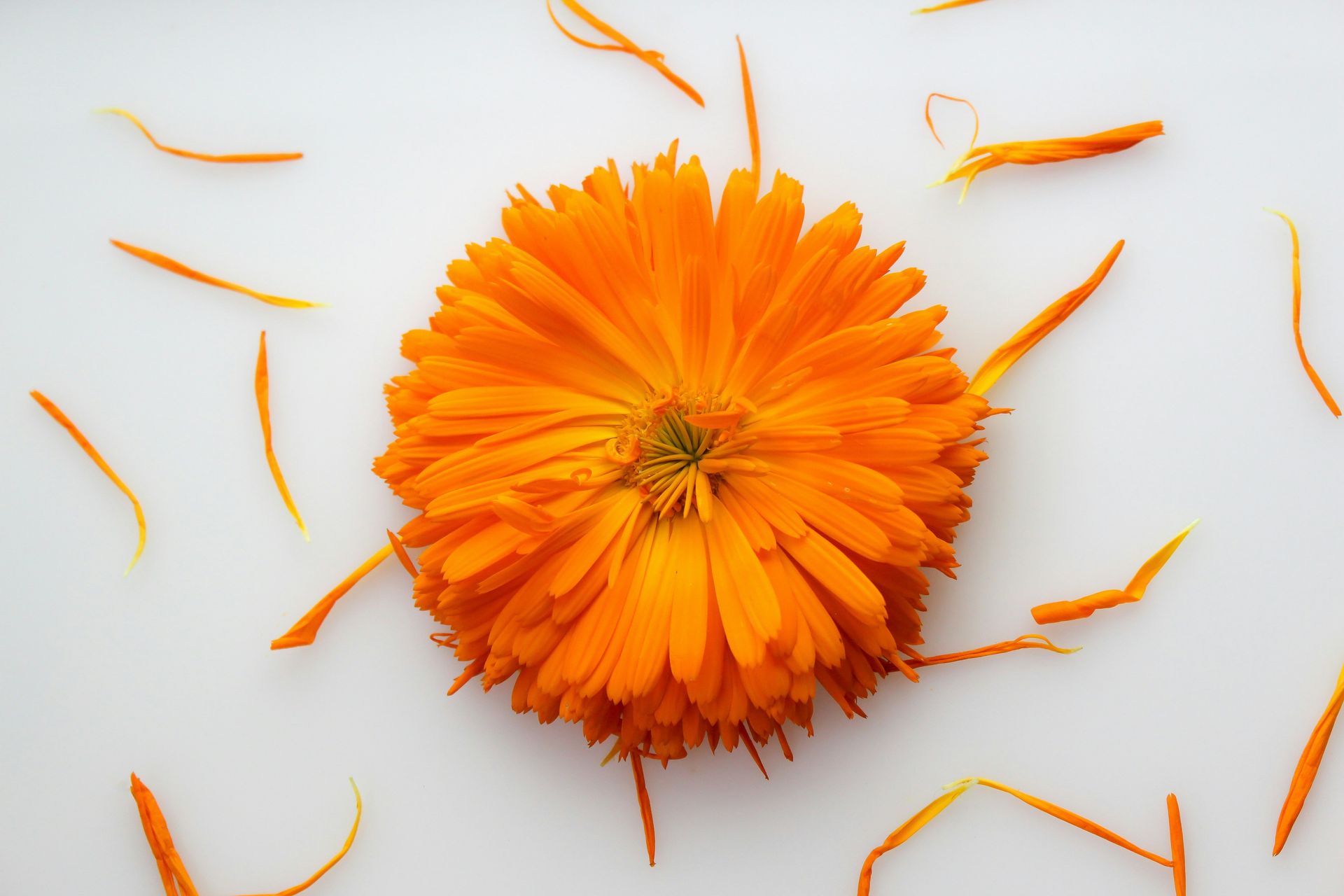



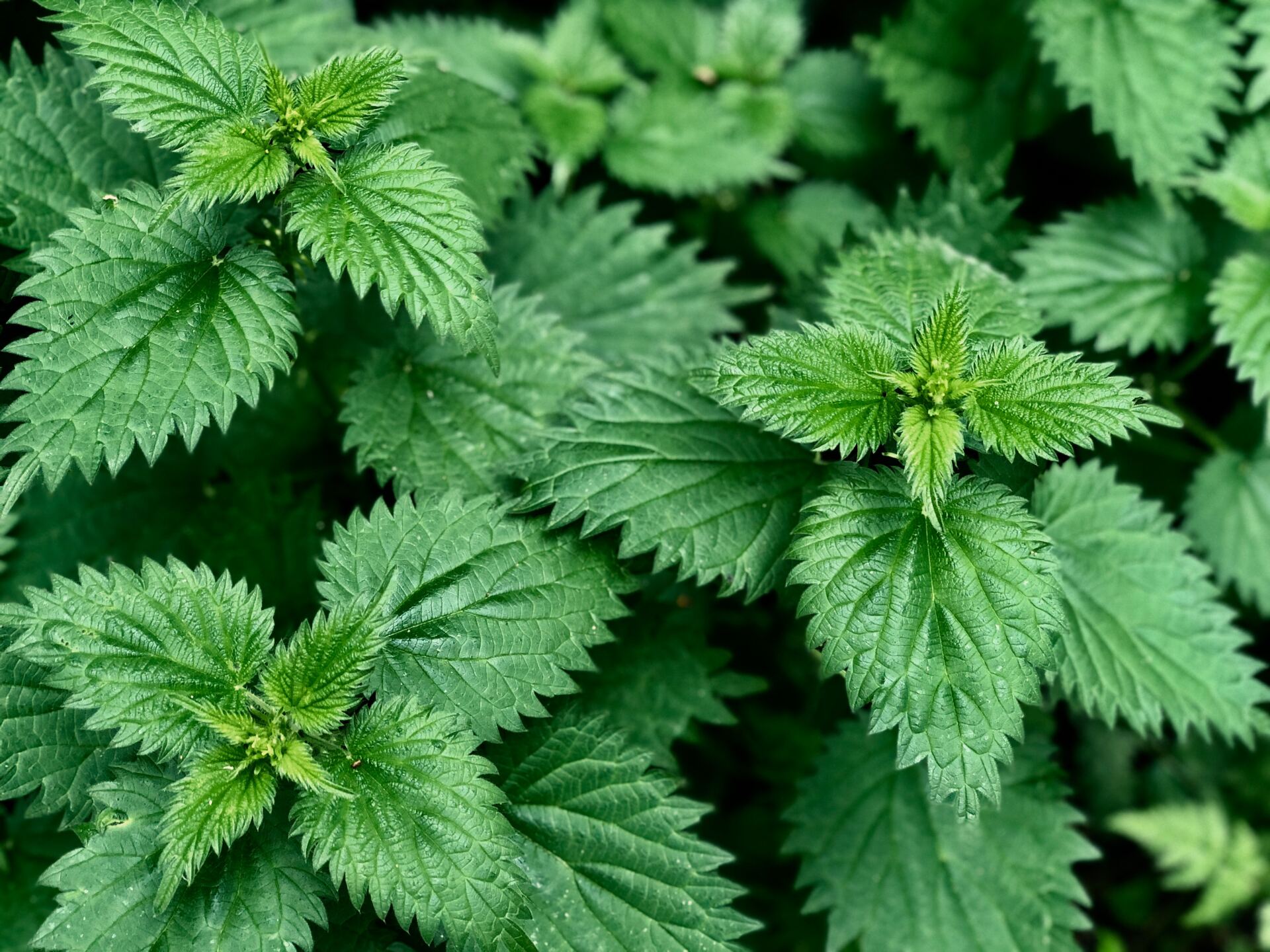



When food rots in a landfill, it produces huge amounts of methane — a greenhouse gas at least 28 times as potent as carbon dioxide. In 2018, the Food Waste Reduction Alliance reported that 84% of unused food in American restaurants ends up in the trash.
At home, the statistics are not much better. Approximately 40% of food waste in the United States happens at the household level. We can do better!
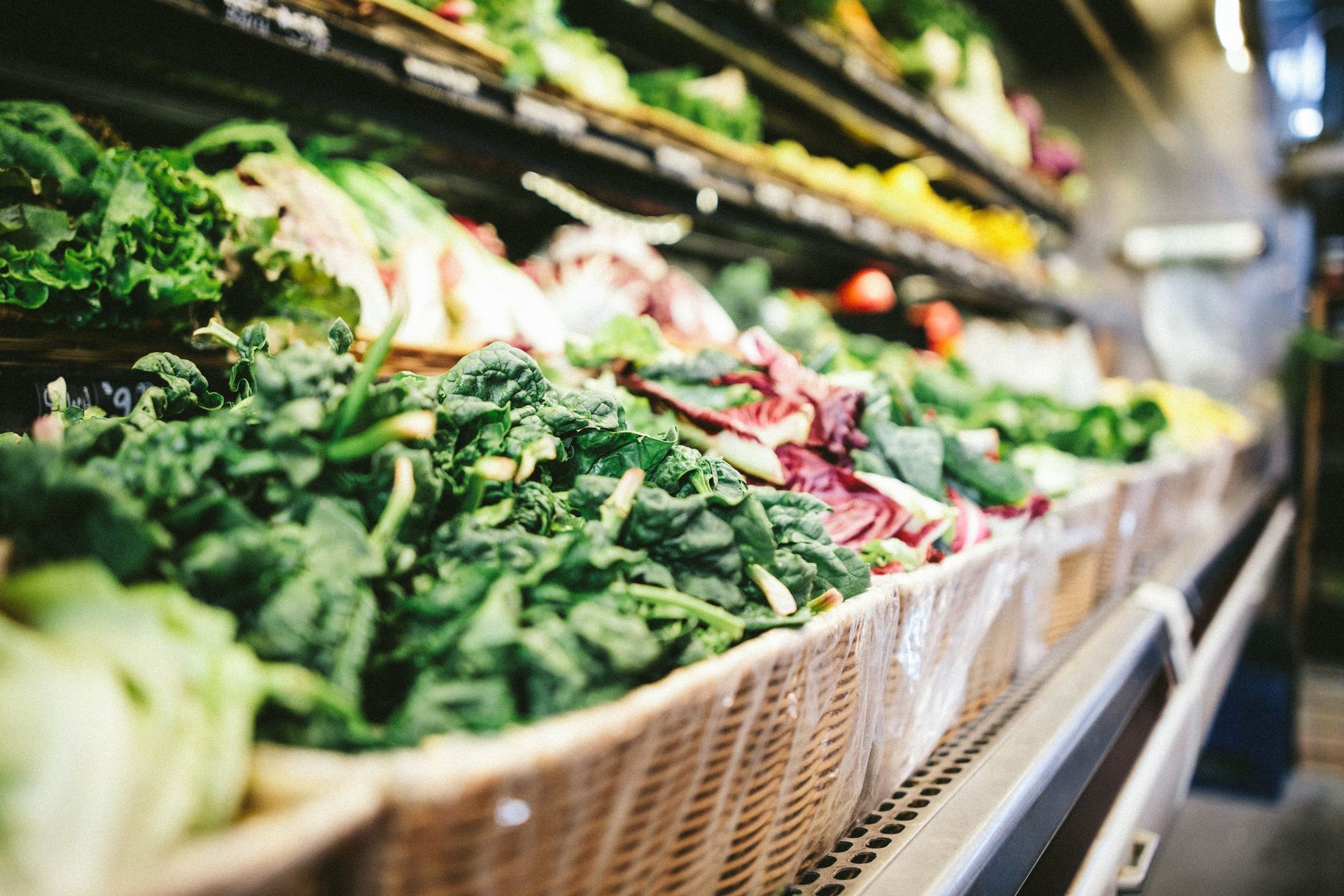
Dedicated grocery days help keep the budget in check and a meal plan in focus.
Designated grocery runs and meal planning
Regular grocery runs on specific days lead to more intentional shopping and more thoughtful results. Planning allows you to buy the produce, baked goods and dairy products that you need so that they stay fresh.
• Prepping on ‘your Sunday’ helps you plan for the week and identify ingredients you already have which helps you avoid unnecessary purchases.
• A good approach is to plan meals based on what is already in the kitchen, then make a shopping list only for the ingredients and items you need.
• Keep a look out for companies that are making an effort toward sustainability. Purchase their products and use every last crumb, bit or drop!
• Remember, our bulk department has an extensive collection of grains, nuts, flours, legumes, cereals, spices, oils, syrups, teas and more! You can purchase any quantity you need in bulk.
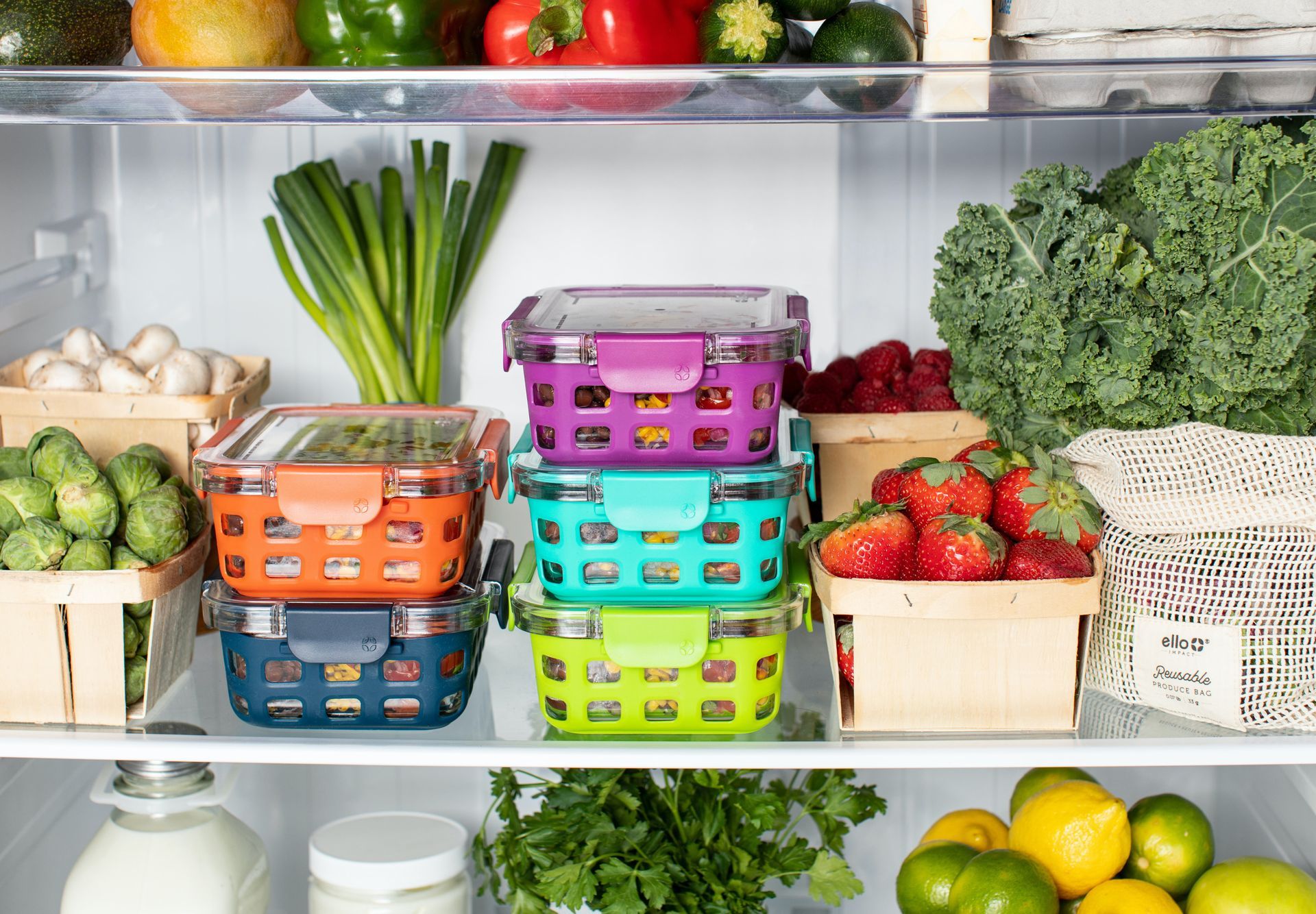
Give your fridge some love. First in, first out. Perishables at eye level.
Repurpose leftovers
There is always a way to repurpose leftovers into a new dish!
• If you eat at a restaurant, always take your leftovers home. It’s amazing how many dishes work as stuffing for a tomato or bell pepper.
• Make a frittata or omelette by adding diced leftover vegetables, meats or cheeses to beaten eggs.
• Repurpose day old bread by making croutons, breadcrumbs, French toast or bread pudding.
• Make a creative coleslaw with diced and shredded leftover raw vegetables.
• Chop up leftover meats and vegetables to make a soup or a stew.
• Pasta or potatoes make an excellent base for a hearty salad.
• Leftover rice stir fried with an egg, soy sauce and whatever bits of vegetables and meats you have on hand makes a tasty fried rice.
• Use technology if you have it! You can enter your ingredients into a search engine which will result in many suggestions you may never have come up with on your own.
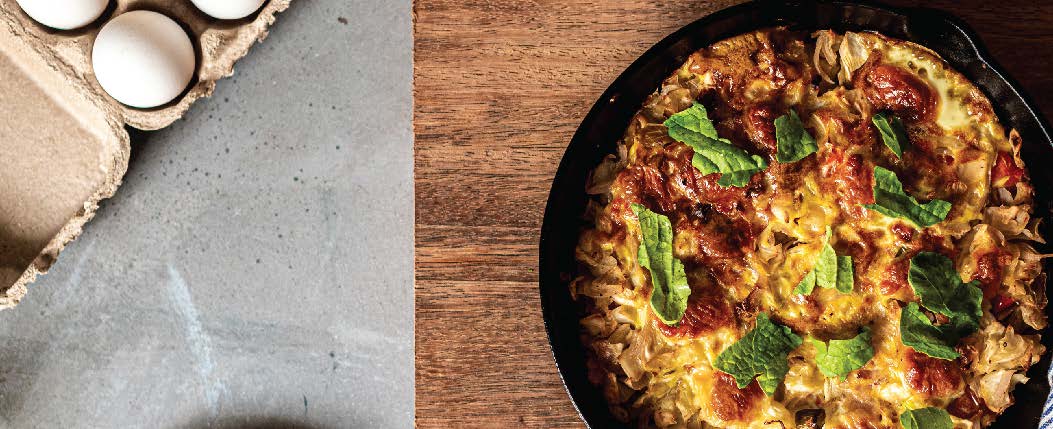
What’s for dinner?
If you have leftovers and eggs, you can probably make a delicious frittata!
Using every last bit of produce
Many times, the parts of our produce that we discard are just as nutritious as the part we were originally after.
• Vegetable bits and peels can be kept in a container and frozen until you have enough to make a simple pot of stock. Particularly with organic produce, almost everything can be eaten instead of going to the landfill.
• Grate the zest from all of your citrus fruits before you peel them. Citrus zest can be placed in airtight containers and frozen for later use.
• Why buy apound of broccoli then throw out half of what you paid for? The stalk is very nutritious and can be peeled and diced and used in a huge variety of dishes.
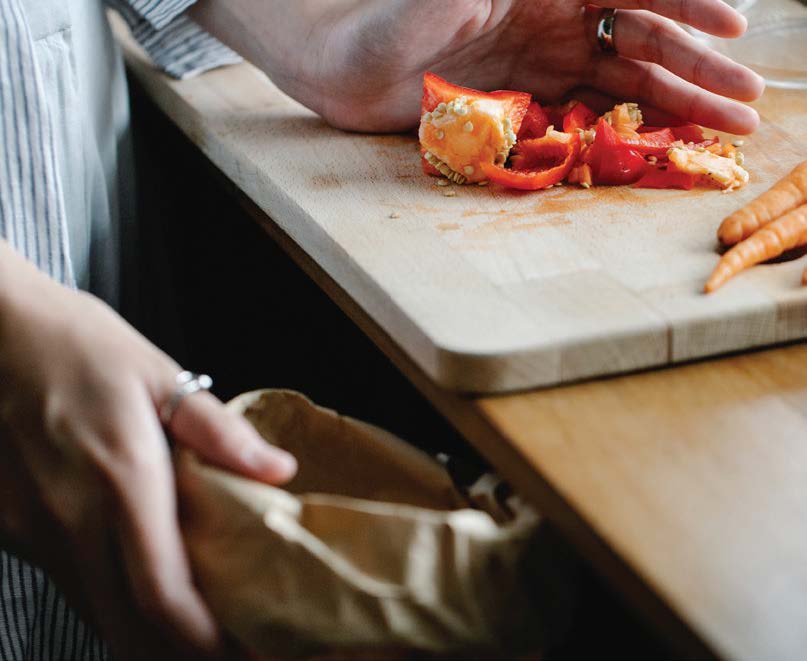
Freeze trimmings to make amazing vegetable broth when you have enough.

Turn scraps and bones into nutritious bone broth.
Down to the bone
Don’t forget about those bones! The most nutritious and immune-supporting part of meats and poultry are arguably in the bones. Toss that chicken carcass, pork or beef bones into a large pot of water and simmer them for a couple of hours to extract everything the marrow has to offer. You’ll also be getting many minerals, collagen and additional protein from the bones and cartilage in your homemade bone broth.
Organize your fridge
• Organize jarred sauces, condiments and oils by expiration date on your side door shelves. This will help identify which needs to be used first. Cleaning out your condiment shelves monthly helps you stay focused on those things that need to be eaten versus those that have a longer shelf life.
• Keep perishable foods at eye level. Having items like leafy greens, mushrooms, fruits and dairy products front and center will help reduce the amount of perishables you might normally lose in the back of your fridge.
• To keep your herbs fresh, try wrapping them in a damp paper towel or place the stems in a glass jar with an inch of water, like you would flowers. This method keeps herbs fresh for up to 10 days. The exception is basil, which does better at room temperature with no water touching the leaves.
• Nuts, seeds, flours and meals that contain oils can go rancid, so store these in airtight, clear containers in the refrigerator. This helps increase the shelf life, reduce food waste and saves money.
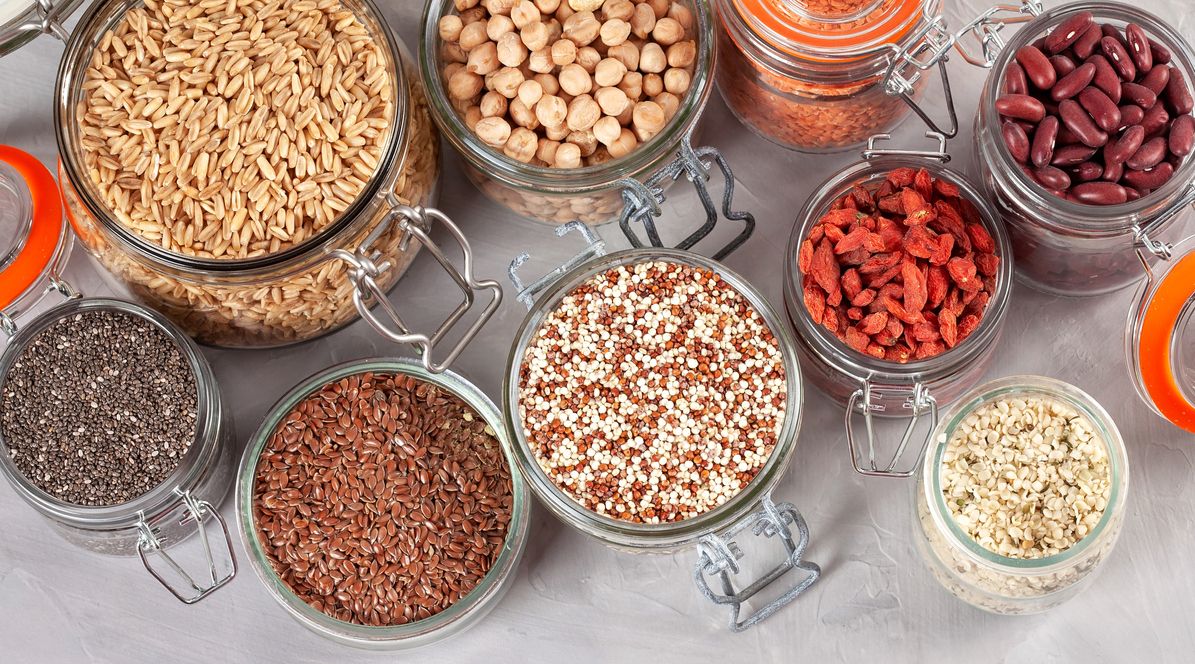
Shop bulk to buy appropriate amounts for your family and store goods in airtight containers!
A word about recipes
Cookbooks and recipes posted online tend to portion meals for 4-6 or 8-10. This can lead to food waste because many people just follow the recipe. Remember that most recipes can be scaled to the actual number of people who will be eating.
Or consider organizing your freezer to accommodate the prepared foods that you won’t be eating all at once. For example, if you make a full recipe of lasagna, but you know you’ll only be able to eat half of it over 2-3 days, consider portioning and freezing half of it immediately. Now you can enjoy that meal without feeling the pressure to eat more of it than you want. And since so many dishes and baked goods can be frozen and then reheated beautifully, you’ll have a delicious meal to look forward to when you’re crunched for time at a future date.
Try a few (or all) of these suggestions to minimize food waste at home. You can help reduce the environmental impact of food production, food disposal, and greenhouse gas emissions while saving money and exercising some creativity. It’s a win for everyone!

Get great recipe ideas by simply searching for the ingredients you already have.









Please give us a call for today’s deli hours as they can vary due to staffing.
Grab and go options are always available until close.
FEDERAL WAY
Monday-Saturday: 8 am - 8 pm
Sunday: 9 am - 7 pm
Please call for current deli counter service hours. Grab and go options available until closing.
2565 S. Gateway Center Place
Federal Way, WA 98003
TACOMA
Monday-Saturday: 8 am - 8 pm
Sunday: 9 am - 7 pm
Please call for current deli counter service hours. Grab and go options available until closing.
2951 S. 38th Street
Tacoma, WA 98409